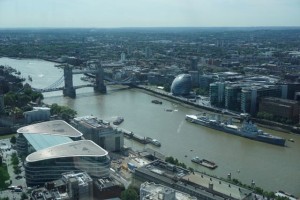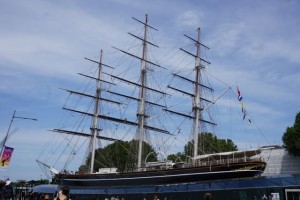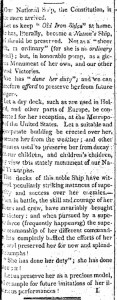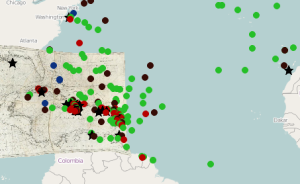Today we are starting a new feature that we think will help highlight the importance of maritime history in World history: a list of several central and important events that happened this week, at some time in the past. Most posts will focus on an event or a ship or the ships involved in a specific event. If you have an event you think we should include, please let us know, in a comment below or in an email to comments@shipindex.org. Enjoy!
We’re kicking off this feature with one of the most important-but-inconsequential-at-the-moment events in maritime history: the Battle of Hampton Roads, between the CSS Virginia and the USS Monitor. While the battle between the two ships had little immediate impact, the importance of the first battle between two ironclads cannot be understated. Read more about it, and other events, below.
March 3: The first US Naval ship built on the West Coast, USS Saginaw (Wikipedia, ShipIndex) was launched on this day in 1859. Given the name Toucey at launch, the ship was renamed Saginaw a few months later. Saginaw sailed from San Francisco Bay a year later, on March 8, 1860, and served in the western Pacific, primarily in China and Japan, before returning to the US West Coast during the Civil War. In the late 1860s, Saginaw charted and explored the Alaskan coast, after it was purchased from Russia. Saginaw was lost in 1870, while visiting Kure Atoll, near Midway, to see if any shipwrecked sailors were on the atoll. All of Saginaw’s crew got to the atoll, and a small group sailed in a small boat for Honolulu, but only one of the sailors survived. The remaining crew were rescued in January 1871. The Saginaw wreck was discovered in 2003.
March 6: In 1987, the ro-ro ferry Herald of Free Enterprise (Wikipedia, ShipIndex) sank minutes after leaving its dock in Zeebrugge, in Belgium. Investigators determined that the car deck doors had been left open, causing the ferry to sink quickly. Of 539 on board, 193 passengers and crew died.
March 8-9: The Battle of Hampton Roads took place in 1862; it was one of the pivotal battles in naval history, as it was the first battle between two ironclad ships, and presaged the future of naval warfare.The hull of the former USS Merrimack (Wikipedia, ShipIndex), which the Union forces had burned to the waterline, was converted to an ironclad steamer, renamed CSS Virginia (Wikipedia, ShipIndex). On March 8, 1862, Virginia engaged and rammed the USS Cumberland (WP, ShipIndex), in the waters off Hampton Roads, Virginia. USS Congress (wp, ShipIndex), having seen the ramifications of the ramming, grounded in shallow water. After battling with Virginia, Congress eventually surrendered. Overnight, USS Monitor (Wikipedia, ShipIndex) arrived, and Monitor and Virginia battled each other the next morning, as the first naval battle between ironclads got underway. The battle was, however, not decisive, with neither vessel gaining the upper hand.
After the battle Virginia remained blockaded in Hampton Roads by multiple US Navy vessels, eventually including several additional ironclads. In May 1862, Confederate forces reluctantly sank Virginia to avoid it being taken into Union hands. Six months later, Monitor was directed to join the blockade of Charleston, but sank in a late December storm, with the loss of sixteen sailors, off Cape Hatteras. Monitor’s wreck was discovered in 1973; since 1998 various portions of the ship, including Monitor’s gun turret have been recovered. Many parts of the vessel are now on display at the USS Monitor Center at the Mariners’ Museum, in Newport News, Virginia.
For more about these ships, check out ShipIndex.org. And let us know if you have events that you think we should include!





